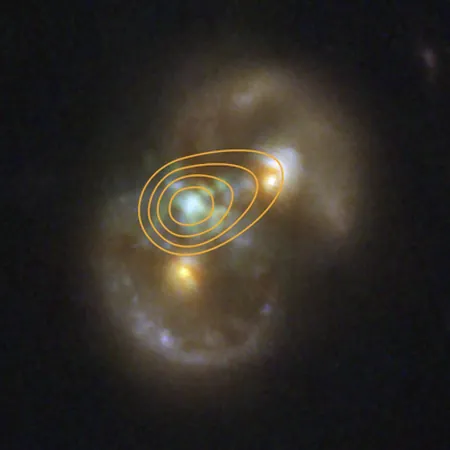
Revolutionary AI Tool Promises Faster Autism and ADHD Diagnoses
2025-07-08
Author: Siti
A New Hope for Diagnosing Neurodivergence
A groundbreaking artificial intelligence (AI) tool is paving the way for quicker and more accurate diagnoses of autism and ADHD in children. This innovation, as highlighted in a recent study published in *Scientific Reports*, leverages motion-tracking data to potentially transform how these conditions are assessed.
Meet the Innovators Behind the Breakthrough
Dr. Jorge V. José from Indiana University is at the helm of this study, asserting that this new technology could significantly enhance the diagnostic process for neurodivergent disorders. His research team harnessed deep learning models trained on high-resolution movement data to differentiate neurotypical children from those with autism and ADHD based on imperceptible movement patterns.
Unlocking Movement as a Diagnostic Tool
The journey to diagnosis for children with neurodivergent disorders can be painfully slow—sometimes stretching up to 18 months. Traditionally, assessments hinge on time-consuming behavioral observations and subjective surveys. This innovative tool introduces an objective method, employing movement data captured during a simple reaching task to identify neurodivergent traits.
"By analyzing motion fluctuations—subtle movements that go unseen—we can gauge the severity of a disorder with a new set of biometrics," explained Dr. José. "No psychiatrist can currently provide a precise assessment of condition severity."
Impressive Accuracy in Classifying Conditions
Participants in the study wore cutting-edge wireless motion sensors while engaging in touchscreen tasks. The sensors collected metrics like linear acceleration and orientation with remarkable precision. Remarkably, the deep learning models achieved an average accuracy rate of 71.48% in classification. The best results came from combining angular velocity with other data types, proving that the combination of motion data can enhance diagnostic accuracy.
Navigating the Challenges of Comorbid Diagnoses
Interestingly, the tool excelled at distinguishing between neurotypical children and those with neurodivergent conditions, yet encountered hurdles when identifying kids with both autism and ADHD—a complex challenge often seen in clinical settings.
A Game-Changer for Early Detection
The study emphasizes a vision for the future: with an expanded dataset, this deep learning approach could serve as an invaluable early screening tool, not just in medical offices but also in schools and community settings. As technology continues to evolve, affordable sensors could become commonplace in everyday devices like smartphones and smartwatches, making this research increasingly practical.
Quantifying Severity with New Biometrics
Moreover, the study explored novel biomarkers—Fano Factor and Shannon Entropy—linked to participants’ micromovements. These metrics helped quantify symptoms: children with more severe conditions showcased higher entropy and distinctive movement patterns.
For instance, those with low-functioning autism displayed significant variability in their hand motions compared to their peers with milder forms.
Shaping the Future of Neurodivergent Care
While this technology is not meant to replace medical professionals or formal diagnoses, it holds promise as a preliminary screening tool in various settings, ideally suited for fast-paced environments like primary care clinics and schools.
"Some patients may require intensive therapies, but for those in the middle spectrum, we can tailor treatments to be more manageable, potentially even at home," Dr. José concluded, hinting at a more effective, affordable future for neurodivergent care.


 Brasil (PT)
Brasil (PT)
 Canada (EN)
Canada (EN)
 Chile (ES)
Chile (ES)
 Česko (CS)
Česko (CS)
 대한민국 (KO)
대한민국 (KO)
 España (ES)
España (ES)
 France (FR)
France (FR)
 Hong Kong (EN)
Hong Kong (EN)
 Italia (IT)
Italia (IT)
 日本 (JA)
日本 (JA)
 Magyarország (HU)
Magyarország (HU)
 Norge (NO)
Norge (NO)
 Polska (PL)
Polska (PL)
 Schweiz (DE)
Schweiz (DE)
 Singapore (EN)
Singapore (EN)
 Sverige (SV)
Sverige (SV)
 Suomi (FI)
Suomi (FI)
 Türkiye (TR)
Türkiye (TR)
 الإمارات العربية المتحدة (AR)
الإمارات العربية المتحدة (AR)